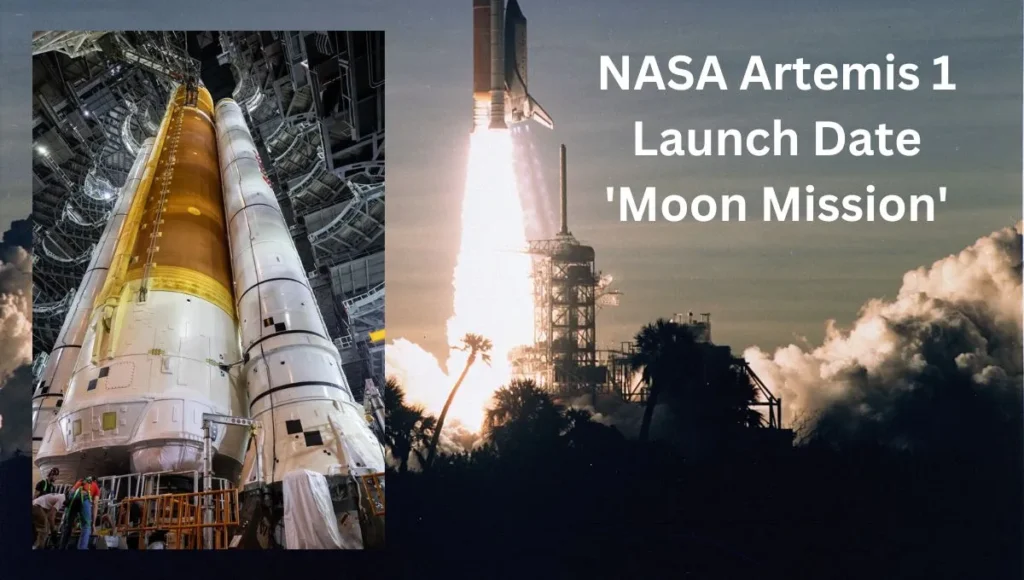NASA Artemis 1 Launch Date : Almost 50 years after the final Apollo moon mission, NASA is taking the first crucial step toward the return of astronauts to the moon. NASA Artemis 1 Launch was Previously Scheduled on 14th November but it was delayed due to the Tropical Storm Nicole.
NASA’s 322-foot-tall moon rocket launched into the predawn sky over Florida’s space coast early Wednesday morning with mannequins strapped into a crew capsule, but no astronauts.
NASA Artemis 1 Launch Date Updates
In the end, Orion will soaring through space with just one large engine after the SLS rocket expended millions of pounds of fuel. Over the next few hours, that engine will fire twice to ensure that the spacecraft is on the correct trajectory for the moon. Once the rocket engine has fallen away, Orion will be left to fly free for the remainder of its journey for about two hours.

On Dec. 11, the Orion capsule is expected to splash down in the Pacific Ocean after traveling to the moon, where it will stay in orbit for a couple of weeks before returning to Earth.
SLS rockets and Orion capsules will both be tested on the 26-day NASA Artemis I flight before human missions. As part of the mission, the spacecraft will carry mannequins equipped with sensors that will monitor conditions and radiation levels during the flight.
In order to reclaim some of the glory of its Apollo-era moon landings, the agency has named this lunar program Artemis, after the twin sister of Apollo. Nearly half a century ago, NASA launched the last Apollo moon mission from Florida’s Kennedy Space Center in December 1972 with a venerable Saturn V rocket.

After two previous attempts in late August and early September – one involving a faulty sensor and another involving hydrogen fuel leaks – were canceled, the Artemis I mission was finally launched.
We are going.
— NASA (@NASA) November 16, 2022
For the first time, the @NASA_SLS rocket and @NASA_Orion fly together. #Artemis I begins a new chapter in human lunar exploration. pic.twitter.com/vmC64Qgft9
A moon base camp will be established on the lunar surface as part of NASA’s Artemis 1 program before the agency ultimately ventures to Mars.
Spacecraft performance will be closely monitored by NASA engineers during the mission. The team will evaluate whether Orion performs as intended and will be ready for its first crewed lunar mission in 2024.
A test flight of Artemis II is tentatively scheduled for 2024, if Artemis I proves successful. On that mission, four astronauts will explore the moon in the Orion spacecraft. The next flight will include the first woman and the first person of color to land on the moon on NASA’s Artemis III mission.


